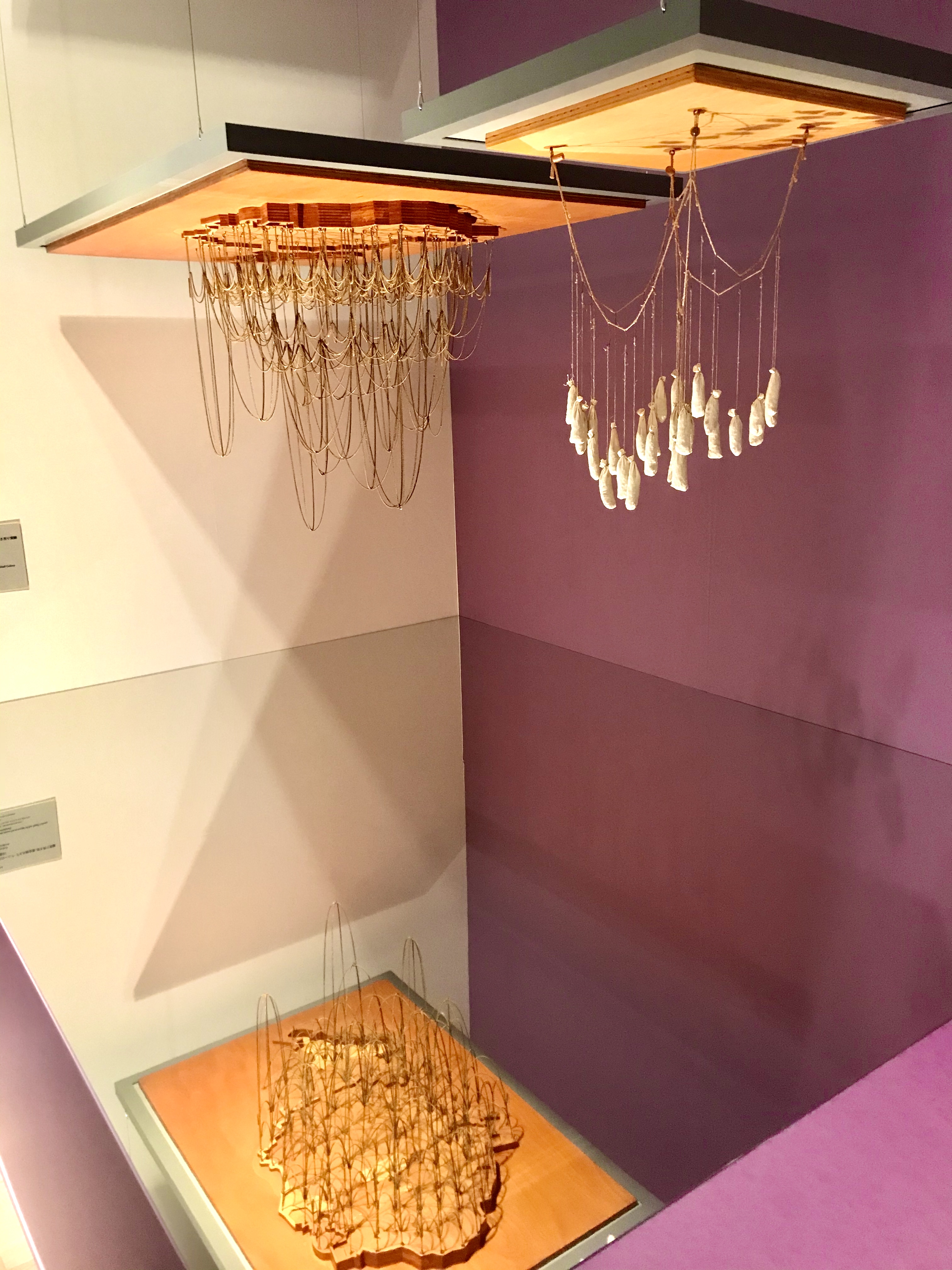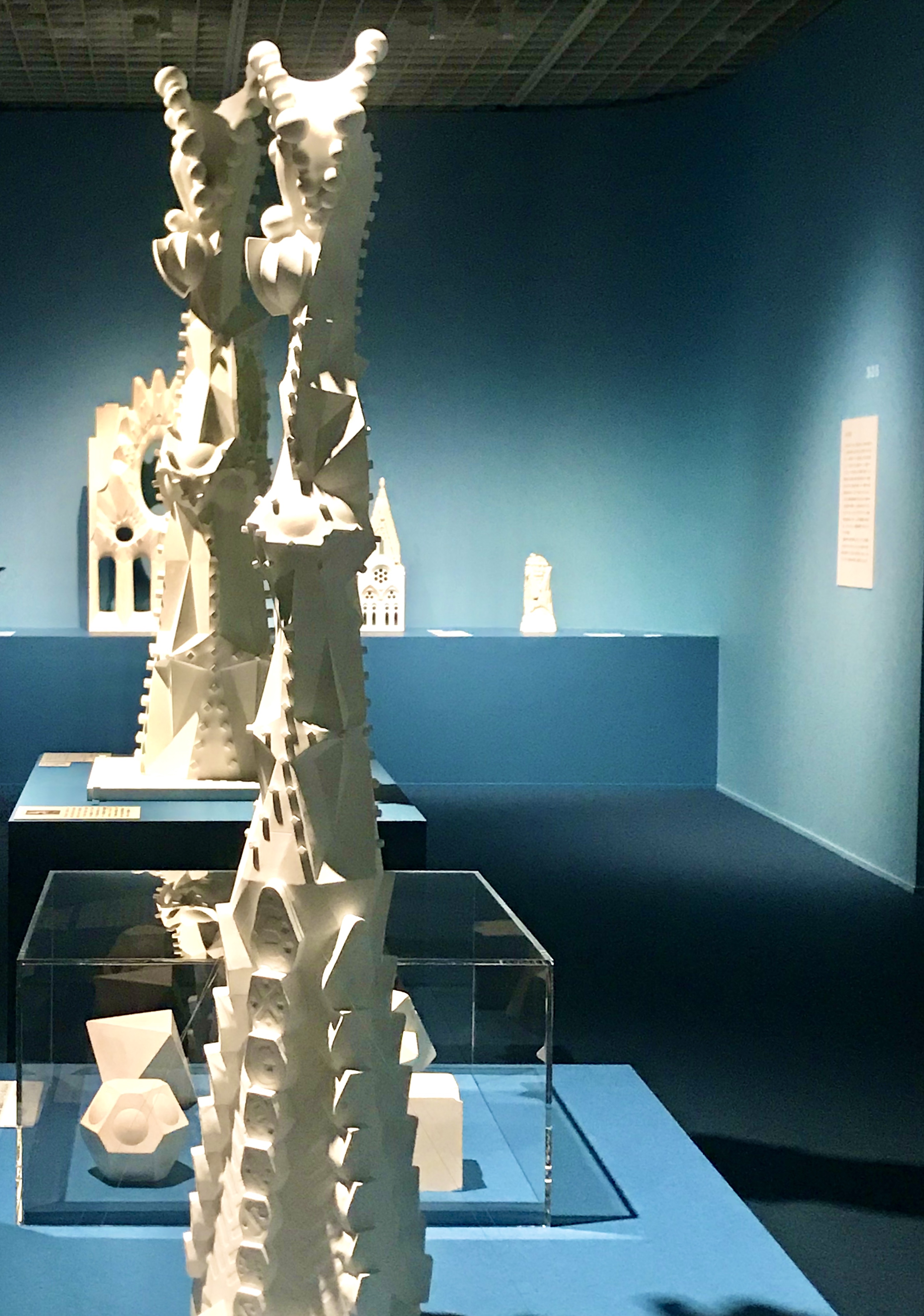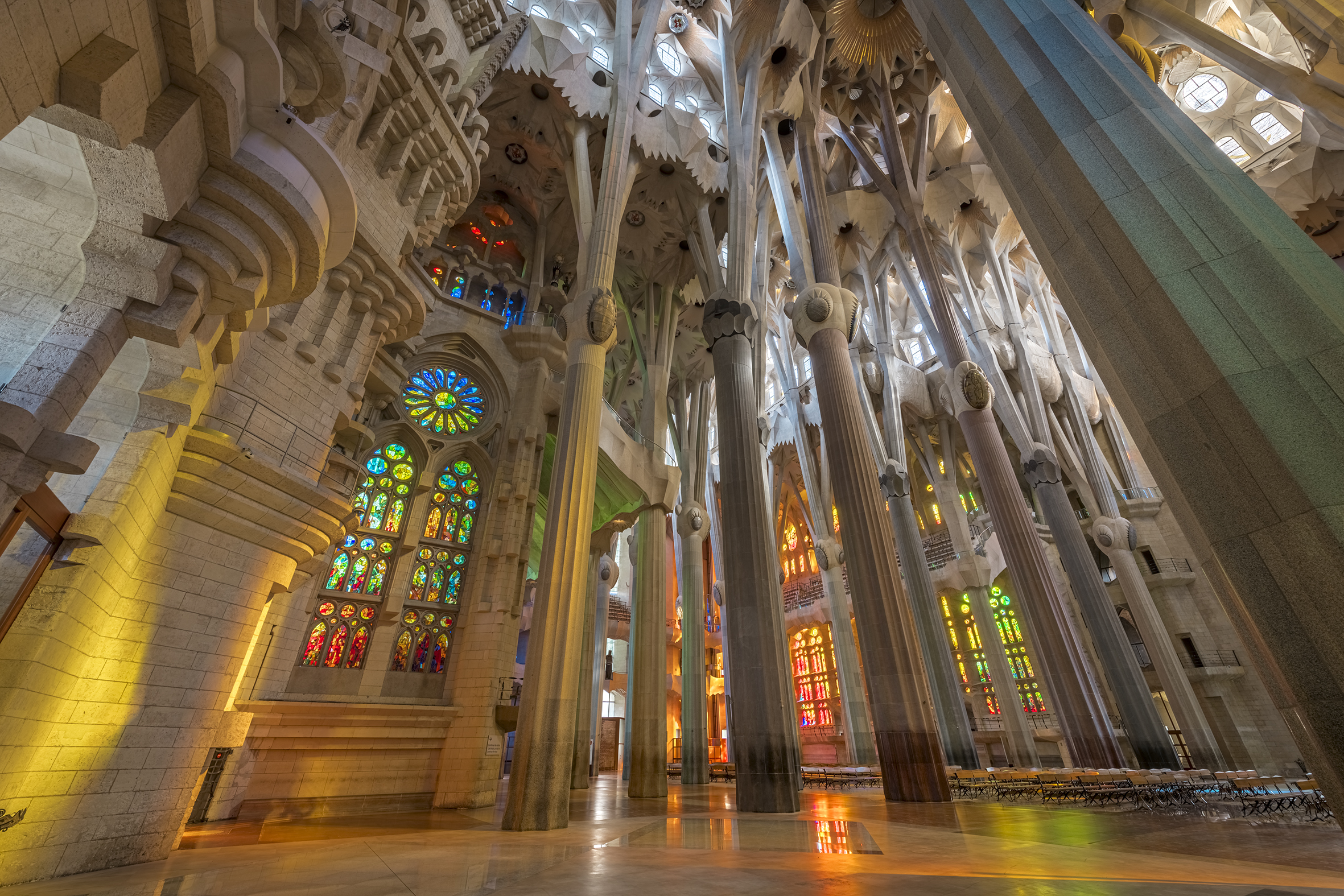GAUDí AND THE SAGRADA FAMíLIA
HAPPENINGText: Alma Reyes
Gaudí manipulated with geometry and parabolic shapes through his philosophy of the law of balance. He proved that when the parabola is rotated, it can obtain a three-dimensional shape, and therefore, a “balanced arch.” An installation in the exhibition demonstrates his unique concept of the “upside-down force model experiment,” wherein he made models of buildings upside-down, then used mirrors on the floor to visualize them downside-up. This was achieved in the contours of the towers, the openings, and the arches of the arcades.

Upside down force model of the Güell Colony Church (detail) / 1984-85, Bunri University of Hospitality, Photo: Alma Reyes
He also adopted hyperbolas that created the high vaults and pillars in the interior of the church, making them resemble trees with branched trunks. Gaudí claimed, “There are no straight lines or sharp corners in nature. Therefore, buildings must have no straight lines or sharp corners.” Hence, he lavishly played with forms and shapes. He also used mathematics in many of his designs, including the number of columns and pillars to give them meanings.

Model of a spire on the Nativity Façade of the Sagrada Família, 2005-10, Taller de modelistes de la Sagrada Família, Fundació Junta Constructora del Temple Expiatori de la Sagrada Família, Photo: Alma Reyes
In the exhibition, numerous models of the basilica towers, facades, window treatments and sculptures verify how Gaudí had ingeniously masterminded the rich synthesis of nature, geometry, mathematics, and symbolism.

Interior of Sagrada Família showing stained glass windows © Fundació Junta Constructora del Temple Expiatori de la Sagrada Família
Light also played a crucial design role for Gaudí. A video clip by NHK beautifully grasps the graceful movement and play of light emitted through the stained glass windows. Gaudí imagined blue tones that reflect the morning sun as they gradually shift to warmer orange and red hues of the afternoon sun. The overall effect shimmers on the polished floor and pillars allowing you to feel the interior glow ascend towards the heavens.
In 1926, Gaudí tragically died after being hit by a tram. He has left behind an incredible legacy and driving force that motivated succeeding architects to complete his most revered masterpiece. Consequently, Sagrada Família reincarnates Gaudí’s universe and hauls us to embrace the apex of glory he had always wished to attain in his powerful creations.
Gaudí and the Sagrada Família
Date: June 13th – September 10th, 2023
*Some items will be replaced during the exhibition period.
Opening Hours: 10:00 – 17:00 (Fridays and Saturdays until 20:00)
*Last admission: 30 minutes before closing.
Closed on Mondays (except July 17th) and July 18th
Place: The National Museum of Modern Art, Tokyo (MOMAT)
Address: 3-1 Kitanomaru Koen, Chiyoda-ku, Tokyo
Tel: +81 (0)50 5541 8600 (Hello Dial)
https://www.momat.go.jp
Text: Alma Reyes




